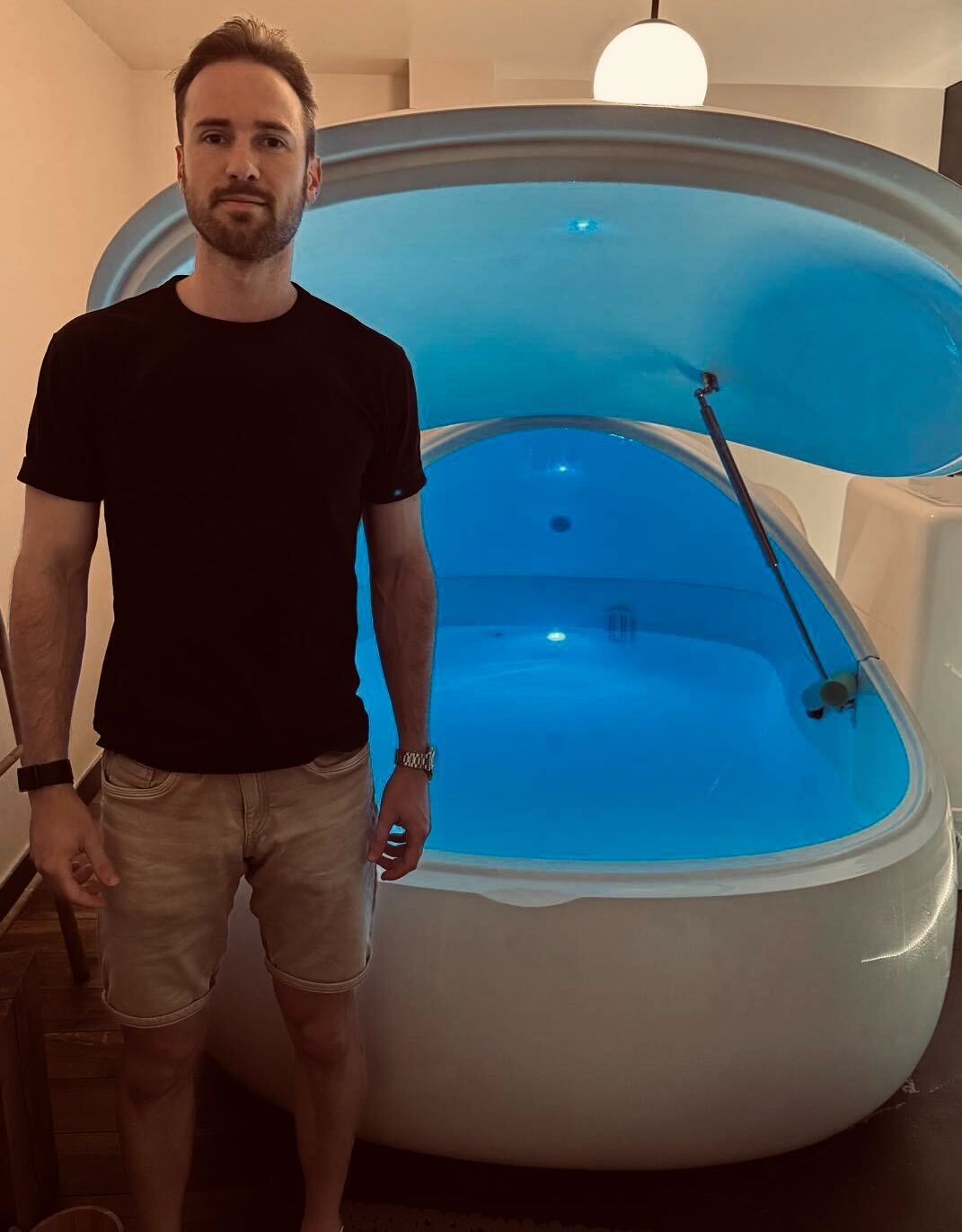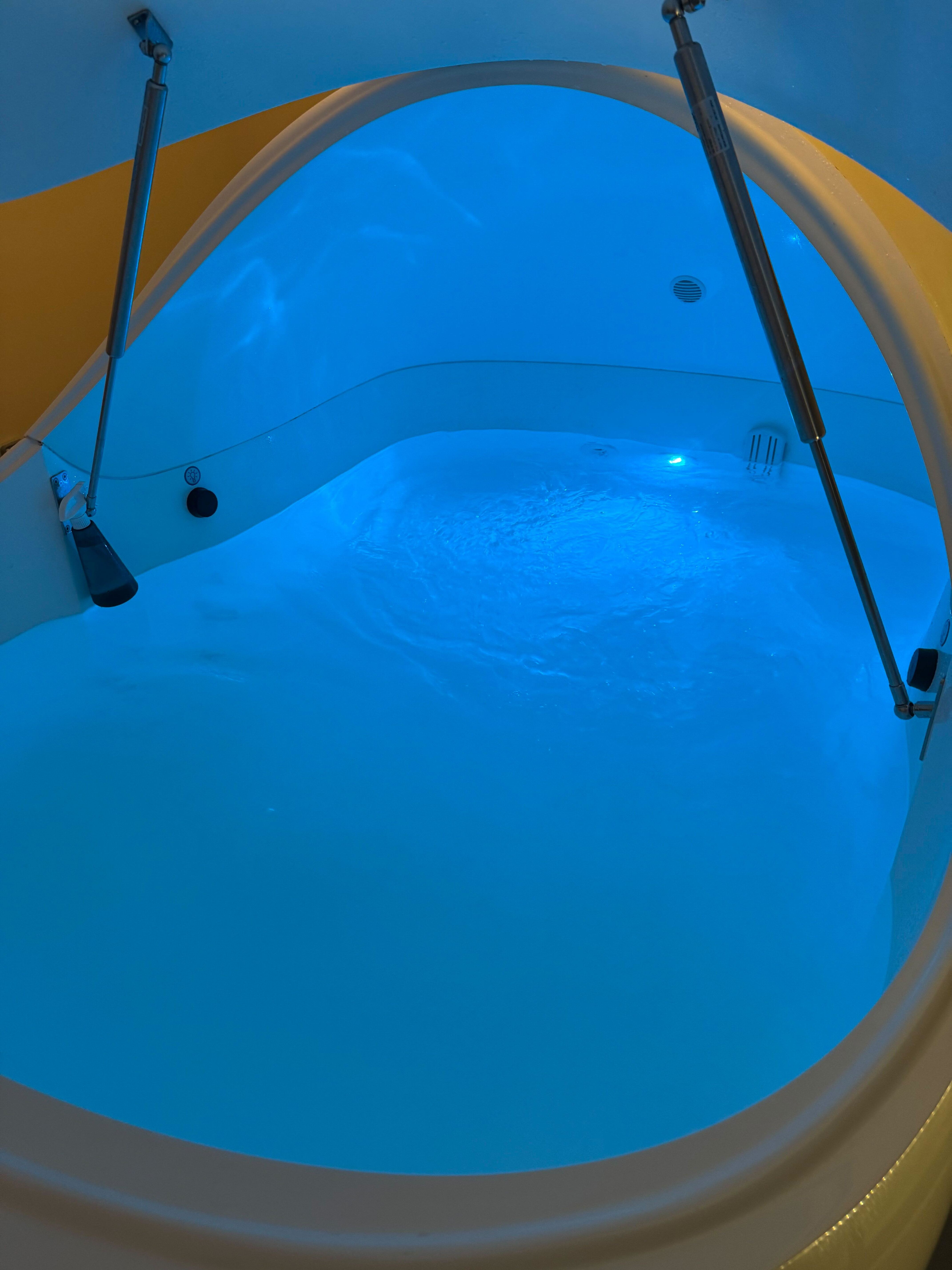It was 2014 when I floated for the first time. I still remember walking into the float center, a little skeptical. I’d read about isolation tanks and had heard some big claims: that they could relieve chronic pain, improve sleep, unlock creativity, even offer deep spiritual insight. But at the time, I just wanted to relax and explore this tool.
What I didn’t expect was that a single hour in that pitch-black, silent tank would turn into a decade-long relationship with something far deeper than relaxation. I didn’t just float that day, I discovered a tool for healing. This is my story but also a story about science and consciousness, told through the lens of saltwater, silence and a 60-year-old invention that started as a curious neuroscientist’s experiment.

The strange genius who started it all: John C. Lilly
To understand how floating became what it is today, we have to go back to the 1950s and the wild mind of Dr. John C. Lilly, a neuroscientist, consciousness pioneer, explorer of inner and outer space. Lilly created the first isolation tank to study one essential question: What happens to the mind when all external stimuli are removed?
At the time, the prevailing theory was that the brain would shut down without sensory input. Lilly proved otherwise. Instead of shutting down, the mind did something unexpected: it woke up, but not in the same way; sometimes in strange, profound or deeply creative ways.
Lilly’s early experiments weren’t just clinical. He began using the tank as a medium for introspection and self-exploration. While his later work took a more psychedelic turn (literally), his original vision of the tank as a tool for consciousness exploration still guides many floaters today, including me.
As Lilly wrote: “In the province of the mind, what one believes to be true either is true or becomes true.”
What exactly is a float tank?
For the uninitiated: an isolation tank (also known as float tank) is a soundproof, lightproof chamber filled with around 10 inches of water and 1k pounds of Epsom salt. The salt concentration is so high, it makes your body effortlessly float, similar to what you can experience in the Dead Sea. The water is kept at skin temperature (~34.5°C), which means that after a few minutes, you stop feeling where your body ends and the water begins.
No light. No sound. No smell. No taste. No touch. No movement. No gravity.
What’s left is… you. Pure consciousness.

Why I started floating, and why I (will) never stop(ped)
At first, I came to the tank for health purposes; recovery from intense training and long work hours. And it worked. Floating feels like pressing the pause button on life. You come out lighter, not just physically, but mentally. It’s one of the rare spaces in our world where nothing is demanded of you. No screens, no schedules, no small talk. Just you, suspended in silence.
Then I began to notice something deeper. After several sessions, I started reaching meditative states I had never accessed before, not even after years of trying to sit and “clear my mind.” In the tank, my brain finally got quiet. Thoughts slowed. Insight began to flow. I’ve used the tank to find creativity when it felt lost. I’ve emerged with new ideas, new perspectives and sometimes no thoughts at all, only stillness.
Science, consciousness, and everyone in between
The beauty of floating is that it works across the spectrum. Whether you’re an athlete, scientist, entrepreneur, artist or simply someone looking to unplug, there’s something here for you. Athletes like Michael Phelps used float tanks during his Olympic training cycles to recover faster and mentally reset. Novak Djokovic, too, has incorporated floating into his recovery routines to perform at the highest level. For them, it’s not just a spa treatment, it’s a strategic tool. And then you have minds like Richard Feynman, Nobel Prize-winning physicist, who famously used the tank to explore consciousness. He wrote about his experiences in Surely You’re Joking, Mr. Feynman! and described how the tank allowed him to think differently; deeply, creatively, outside the usual bounds of rational thought. The float tank is a mental “defrag.” By cutting off external input, your brain gets a chance to reorganize and reset. Users often experience boosts in creative thinking and problem-solving abilities.
The tank has growing scientific support. Researchers like Peter Suedfeld, Thomas Fine, and modern neuroscientists like Justin Feinstein have shown that floating reduces cortisol levels, decreases blood pressure significantly, enhances sleep, helps with anxiety and PTSD and promotes deep relaxation by activating the parasympathetic nervous system.
Some people also report using float therapy for pain management: research shows relief from fibromyalgia, tension headaches and chronic back pain after regular sessions. One potential contributor is the magnesium-rich Epsom salt solution used in float tanks. Magnesium is crucial for muscle relaxation and stress reduction (many people are deficient). While the extent of transdermal absorption is still debated, the combination of both warmth and mineral exposure appears to ease physical tension. There are some reports of feeling noticeably looser and lighter, suggesting that both magnesium rich environment and sensory silence work together to create a powerful therapeutic effect.
One modern voice lending scientific credibility to float therapy is Dr. Rhonda Patrick, a biomedical scientist known for her work on aging/longevity and brain health. She describes floating as a powerful tool to reduce inflammation while supporting neuroplasticity. After her own float experiences, she highlighted its unique ability to calm the nervous system and promote recovery, both physically and cognitively. For her and the biohacking community, it’s a science-backed practice for long-term resilience and brain optimization.
EEG studies have shown that the brain transitions from active beta waves (linked to thinking and stress) into slower, more restorative states like alpha and theta waves (the same brain patterns seen in deep meditation, creative flow periods or early-stage sleep); this shift supports nervous system regulation. Some advanced floaters even reach delta wave activity, typically associated with deep healing sleep. These altered brain states help explain why floating often feels dreamlike and deeply calming, even after a single session. As Michael Hutchison beautifully put it in The Book of Floating, floating is not just therapy, it’s transformation.
A tool for the 21st century mind
Today, we live in a world that is always on. We’re drowning in notifications, overstimulation and the pressure to be perpetually productive. The float tank is one of the few spaces left that says: do nothing. It’s meditation on steroids (or easy mode). And in that nothingness, something extraordinary happens. Even people who struggle with stillness find peace in the tank. It doesn’t ask you to control your breath or sit perfectly upright, it simply holds you. And sometimes, that’s all we need.
What I’ve learned after 10 years of floating
If I’ve learned anything since that first float in 2014, it’s this: you don’t always need more. Sometimes you need less. Less stimulation, less noise. The float tank is less of everything, and somehow… more of what matters. Floating has taught me to trust the inner experience. To explore thoughts that usually get drowned out in the everyday hum of life.
Every time I step into the tank, I’m reminded of a truth we often forget: that most of the time everything we need (peace, creativity, clarity) is already inside us.
Interested in trying it? A few tips
- Let go of expectations. Your first float might feel disappointing? amazing? or it might be challenging…
- Don’t fight your thoughts. Let your mind do what it wants. It will quiet down… maybe.
- Float regularly. Like meditation, exercise or yoga, the benefits deepen with consistency.
- Hydrate and rest after. The experience can be detoxifying.
Final thoughts
Whether you’re looking to recover from physical strain, find mental clarity or simply step away from the noise, floating offers a quiet invitation inward. It’s not a magic pill but it is a profound journey into the self. So if you ever feel the world is too loud, too fast, too much… step into the silence. You might be surprised what you find there.